DU8002 is one of the models from the Crystal UHD series by Samsung, suitable as a television for everyday, occasional use. The Smart TV system based on Tizen works really well – it is fast, has a rich offer of applications, and a user-friendly interface, making daily use easier. In home use, the television stands out with excellent viewing angles, ensuring that even people sitting from the side will have a good image. It's worth mentioning the small, handy remote control that can easily operate external devices like Canal+ decoders. This somewhat compensates for the lack of recording features and adds versatility to the television. When it comes to gaming, DU8002 will be sufficient for those who spend time watching the television casually. Low input lag and the ALLM feature make gameplay smooth and comfortable. Due to the television's segment, there are also certain compromises – the IPS panel provides good viewing angles, but this affects the contrasts, which are rather average. Additionally, low brightness can be a downside in well-lit rooms. In summary, DU8002 is a solid choice considering its price. However, if we are thinking about a Samsung television and want better experiences watching high-quality content, it is worth considering paying extra for the Q60D model from the QLED series. For just a little more, you can achieve better picture quality and a wider range of features, which could be a more satisfying investment.
- Matching (Score)
- Our verdict
- TV appearance
- Where to buy
- Contrast and black detail
- HDR effect quality
- Factory color reproduction
- Color reproduction after calibration
- Smoothness of tonal transitions
- Image scaling and smoothness of tonal transitions
- Blur and motion smoothness
- Console compatibility and gaming features
- Input lag
- Compatibility with PC
- Viewing angles
- TV efficiency during daytime
- Details about the matrix
- TV features
- Apps
- Playing files from USB
- Sound
Samsung DU8002 (IPS) vs Samsung Q7F
Direct compare
DU8002 / DU8072

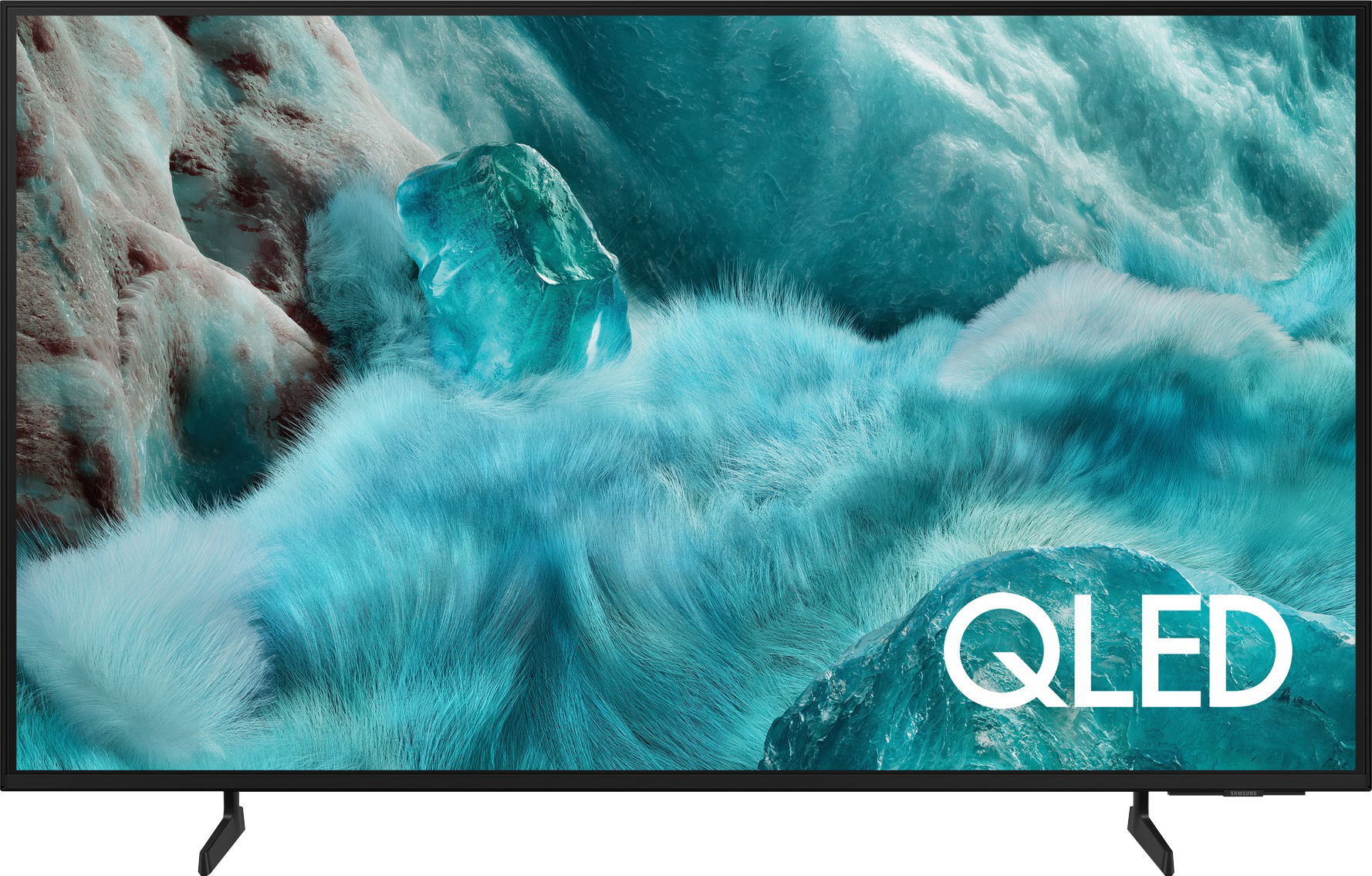
Panel type: LCD IPS
Resolution: 3840x2160
System: Tizen
Model year: 2024
Complete the survey to find out the result

Panel type: LCD VA
Resolution: 3840x2160
System: Tizen
Model year: 2025
Complete the survey to find out the result

Overall rating
5.6
5.7
Movies and series in UHD quality
5.0
5.7
Classic TV, YouTube
4.8
5.6
Sports broadcasts (TV and apps)
5.5
4.8
Gaming on console
6.5
6.1
TV as a computer monitor
6.0
6.0
Watching in bright light
4.2
3.9
Utility functions
6.3
7.3
Apps
8.7
8.7
Sound quality
5.9
5.8
Complete the survey to find out what fits your preferences
Advantages
Advanced and smooth operating system - Tizen
Great viewing angles
Ideal for PC work
Sleek, modern design - perfect for wall mounting
For casual gamers - low input lag and ALLM mode
*120Hz in the 85' variant
Solid native contrast (VA Panel)
Vivid colours thanks to QLED filter
Low input lag (around 10ms)
Advanced and smooth Tizen operating system
Compact sleek design with Type-C charging
Disadvantages
Very weak contrast
Average brightness
No recording function
Very low brightness (only 250 nits in HDR)
Lack of many features for gamers including VRR and HGiG – the manufacturer promised something, but in the end, those features are simply not available
Lack of many classic "television" features e.g. recording to USB or PIP
No Dolby Vision
Average quality of digital image processing
Our verdict
The Samsung Q7F is the manufacturer's cheapest model from the QLED line, and it must be admitted that a few advantages can easily be specified here. After calibration, the colours look really good, and the additional QLED filter makes the hues more saturated than in typical budget LCD televisions. Additionally, it features a VA panel that offers quite decent native contrast. It is certainly not at the level of top-tier models, but it performs adequately for everyday viewing. However, the biggest plus is the Tizen system, which is Samsung's flagship offering. It operates smoothly, is feature-rich, provides access to a multitude of applications and add-ons, and at the same time allows for straightforward connection of the television to the SmartThings ecosystem and control of other devices in the home. And basically, this is where the list of advantages ends, as the longer you use the Q7F, the more apparent it becomes that this is a product that is significantly underdeveloped. It's not just about the panel itself with its low brightness and mediocre picture quality in HDR films, but also about the lack of features that typically worked flawlessly in Samsung models. The manufacturer claims the presence of VRR and HGiG, but in practice, they offer no benefit, making it difficult to recommend this television even to casual gamers. It also does not perform particularly well for regular television as the digital image processing is at best average, and the tone transition enhancement feature, which usually worked excellently in Samsung models, hardly functions here. The Q7F is a piece of equipment that can only be recommended to those looking for a television with two phrases on the box: “QLED” and “good Smart TV”. Everyone else receives a rather bland product that falls significantly short of competing even with other more budget-friendly options. It’s a pity because usually, the word "QLED" in Samsung meant something more than just an ordinary television.
TV appearance



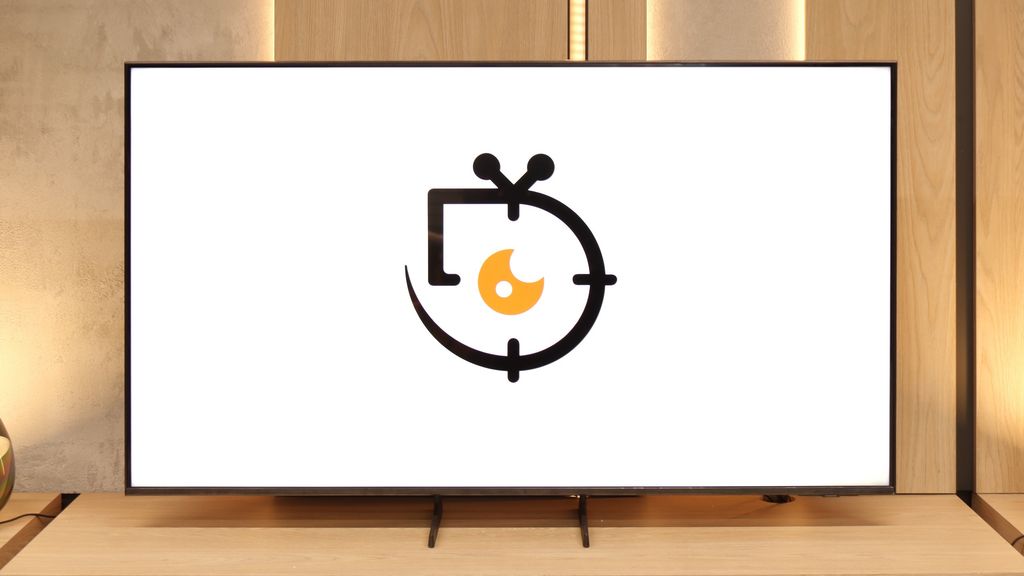
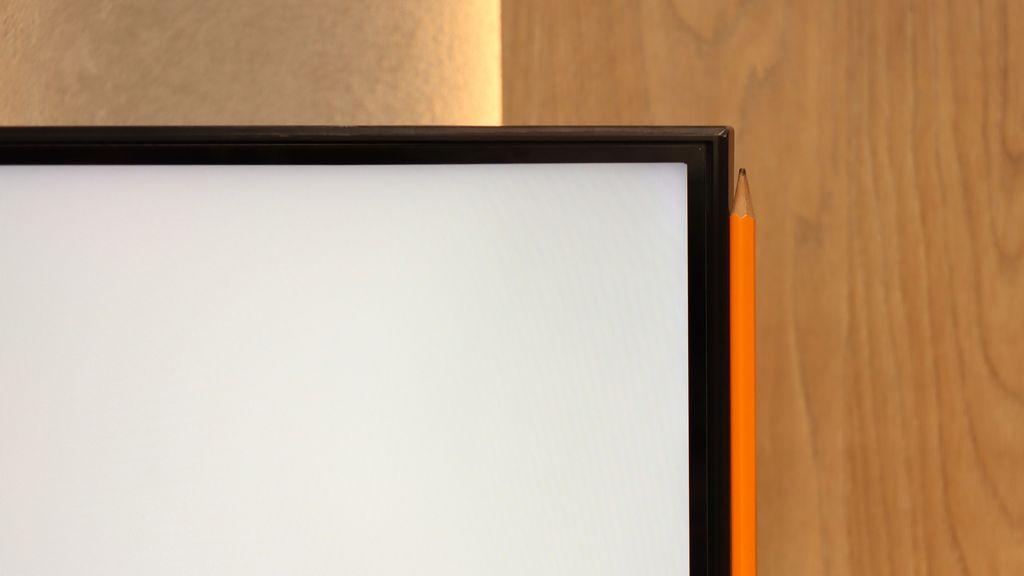
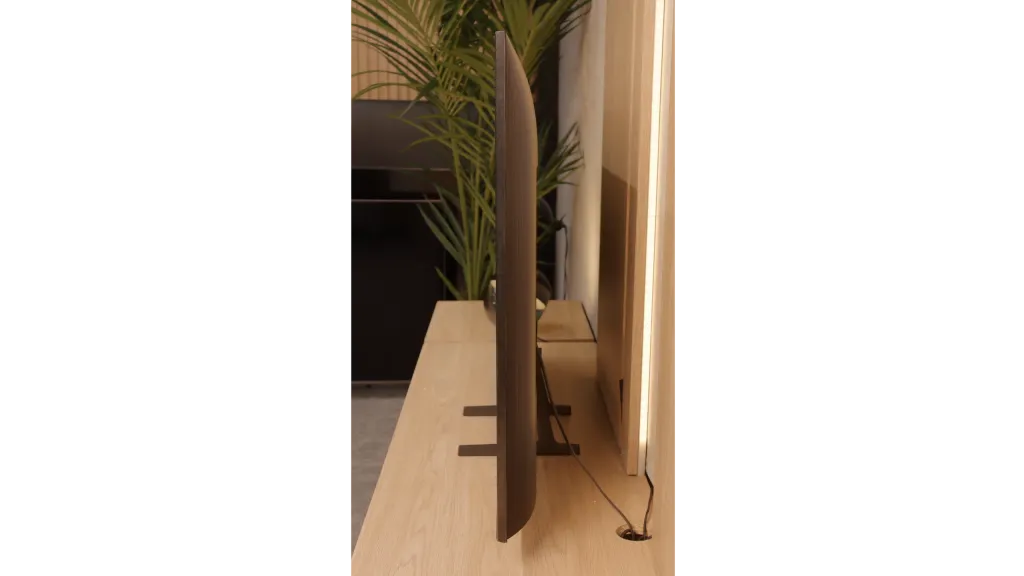
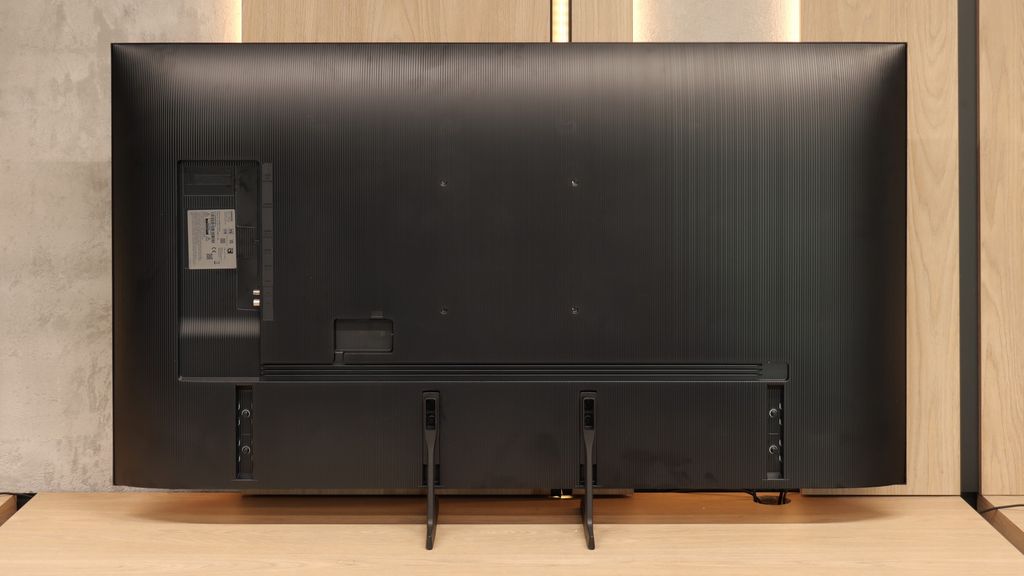
Contrast and black detail
1.1/10
4.7/10
Local dimming function: No
Local dimming function: No
Contrast:

Result
750:1

Result
850:1

Result
750:1

Result
700:1

Result
650:1

Result
2,850:1

Result
2,750:1

Result
3,300:1

Result
3,050:1

Result
2,750:1
Halo effect and black detail visibility:

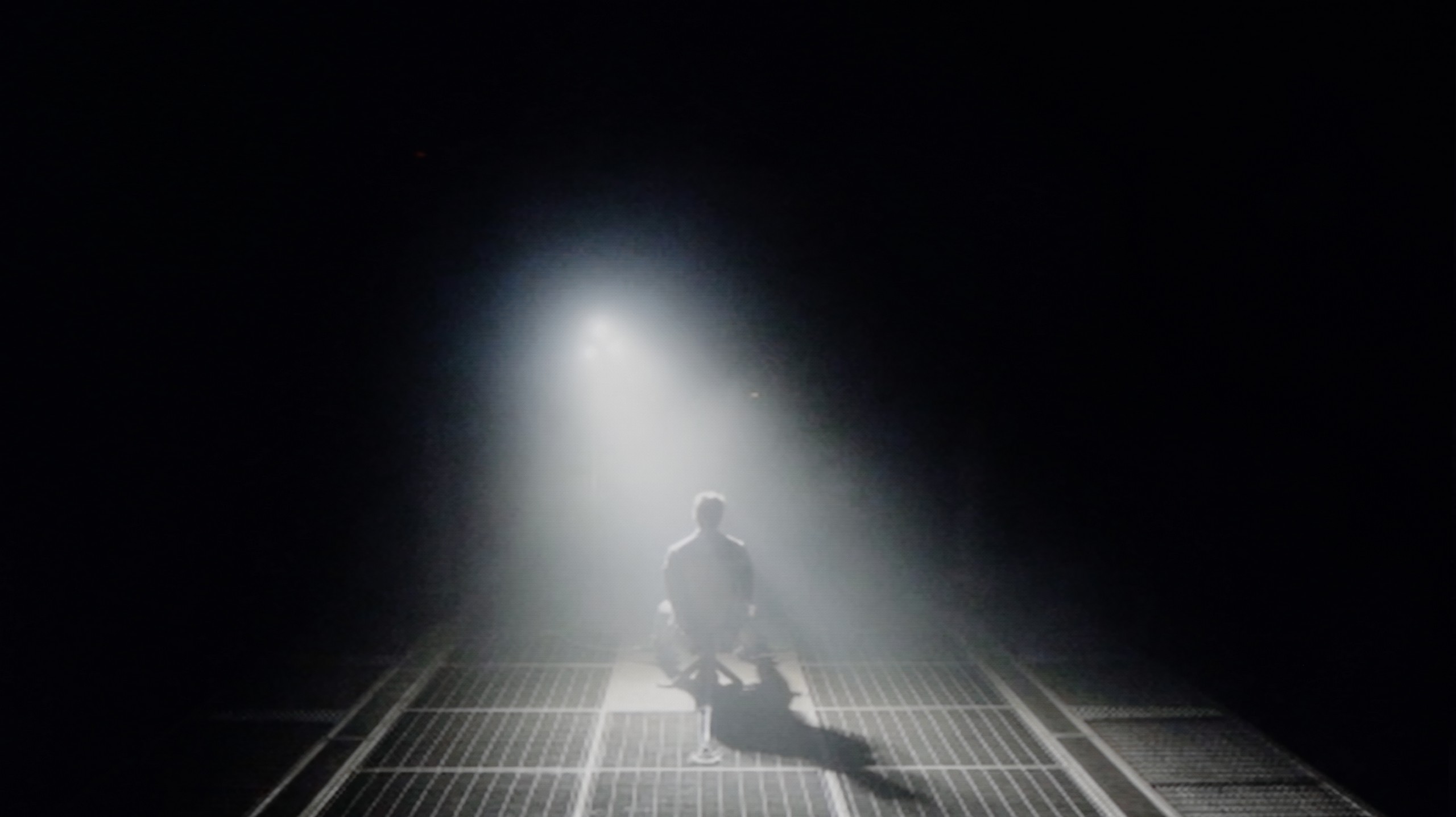
The DU8002 model in the 55-inch version is equipped with an IPS panel, which unfortunately does not favour high contrast. The result? Instead of deep blacks, we see shades of grey, which makes night scenes and darker parts of the film appear washed out and lacking in clarity. The black in this model resembles a silvery hue rather than a deep, cinematic effect, which is a clear downside for fans of intense contrasts and dynamic images. In everyday use, such characteristics can significantly reduce the satisfaction of viewing.
The Samsung Q7F in the tested size of 55 inches has a VA panel, which immediately translates to decent native contrast. Values around 3000:1 may not be record-breaking, as we know that panels with more than double the contrast are currently being produced, but it still performs much better than IPS or ADS panels, where black quickly fades into shades of grey or navy blue. Unfortunately, we do not find typical local dimming zones here, but the manufacturer has included something akin to global dimming – that is, dimming the entire screen in relation to the content. The effect? In most scenes, black appears rather solid, although during night viewing sessions, we will still see that it more closely resembles dark navy or grey than true pitch black. Overall, it's okay, but without fireworks – it's not spectacular, but it's also not a disaster.
HDR effect quality
4.2/10
3.7/10
Luminance measurements in HDR:

Result
278 nit

Result
272 nit

Result
297 nit

Result
277 nit

Result
272 nit

Result
215 nit

Result
225 nit

Result
267 nit

Result
113 nit

Result
250 nit
Scene from the movie “Pan” (about 2800 nits)


Scene from the movie “Billy Lynn” (about 1100 nits)


Static HDR10


Dynamic: HDR10+
Dynamic: HDR10+


HDR luminance chart:
Samsung Q7F
HDR luminance
Samsung DU8002 (IPS)
HDR luminance
The HDR effect on the DU8002 television leaves much to be desired. A brightness level of 300 nits cannot provide a true high dynamic range experience, which makes the viewed content resemble more of a standard SDR than impressive HDR. Scenes that should dazzle with brilliance and detail appear muted and lacking in depth. Nevertheless, the television deserves praise for its high coverage of the DCI-P3 colour gamut at 92%. This means that colours are vivid and saturated, which may satisfy viewers who prefer rich tones, even if the HDR effect does not fully meet expectations.
Unfortunately, the Samsung Q7F is not one of the brighter televisions, and this has a direct impact on the quality of HDR films. The peak brightness of the panel is just around 250 nits, which is definitely too low to speak of true cinematic experiences. In practice, the image in HDR content does not differ significantly from classic SDR, making it difficult to talk about any "wow effect" that usually accompanies us when watching such films. During tests of film scenes, the image simply looked dark, and the brightness almost always hovered around the aforementioned 250 nits. The worst performances were with shots that included small, intensely shining elements – the global dimming technique used reacted very aggressively in these cases, dimming the entire screen to maintain the effect of black. However, it is worth noting the presence of the QLED coating that expands the colour palette. For a budget QLED model, the Q7F performs quite decently here: the coverage of the DCI-P3 palette is about 93%, and BT.2020 reaches 70%. This means that, despite the low brightness, the colours can still look quite vivid and attractive.
Factory color reproduction
4/10
5/10


Factory Mode
After calibration


Factory Mode
After calibration
The DU8002 offers a Filmmaker mode, which is intended to provide an authentic image reproduction in line with the creators' vision. Unfortunately, despite the promising name, the results are far from ideal. The white balance in this mode shows significant drops in blue, leading to a noticeable yellowing of the image, as seen in our comparison photo. Colour Checker tests confirm these errors. As for brightness, the gamma characteristic is too low compared to the reference line of 2.4, resulting in excessive screen brightness. A similar issue occurs with 4K content – the EOTF responsible for brightness in 4K material shows significant increases above the reference line, leading to excessively bright small light elements. As a result, the Filmmaker mode in the DU8002 does not meet expectations and instead of offering high quality, presents an image full of tonal and colour inaccuracies.
The factory colour accuracy of the Samsung Q7F is certainly not one of its strong points. In Filmmaker mode, which theoretically should be the closest to neutral, the issue with white balance immediately stands out. There is too much red on the screen, while blue is lacking. The consequences of this are very easy to notice – white, instead of being neutral, takes on warm, almost slightly orange tones. In the long run, this makes the entire image look somewhat unnatural, and bright areas of the scene may seem unrealistic. The problems become even more evident in HDR content. The graphs show that the television has significant errors in the Color Checker palette, which translates to visible inaccuracies in the actual image. Practically, this means that the colours are not presented as they should be. The Q7F also heavily manipulates brightness; darker elements are overly boosted, losing their cinematic quality, while bright parts may appear dimmed. As a result, the image seems flattened, and contrast, instead of helping to bring out details, only highlights its own limitations. This is particularly frustrating in HDR material, where every detail matters. In scenes where there should be a subtle play of light and shadow, the Q7F either oversteps by brightening too much or conversely – suppresses elements that should draw the eye. This causes the image to lose its depth, and instead of cinematic realism, we have a rather simplified effect.
Color reproduction after calibration
7.8/10
7.6/10




Samsung is one of those companies that offers advanced tools for improving picture quality in its televisions, including a 20-point white balance adjustment. Even in the budget model DU8002, with the right adjustments, surprisingly good results can be achieved. The white balance, especially for HD content, is really good – tests on the Colour Checker palette confirm accuracy levels of 2–1.5, which speaks to this television's considerable capabilities in colour reproduction. In 4K content, although not as perfect as in lower quality materials, the overall picture looks significantly better.
The gamma brightness has also been heavily adjusted, meaning the picture is not overly bright and looks more natural. What about the EOTF curve? At first glance, it seems fine, but upon closer inspection, especially in film tests, it is clear that the television, due to its low contrast matrix, struggles. The EOTF also drops below the reference line. Nevertheless, the DU8002 is an example of a budget model where calibration is worth investing in. Although construction flaws, such as the type of backlighting, cannot be completely eliminated, colour accuracy is surprisingly good, especially given its price.
After professional calibration, we managed to bring the Q7F into order – at least in terms of SDR content. The picture in this mode looks really good: the white balance has been set correctly, the colours appear natural, and errors in the colour palette have dropped to levels that are practically invisible to the eye. Gamma behaves exemplary, and the only minor drawback is a slight lightening of smaller elements, which results from the lack of local dimming. For everyday watching of television or films in standard quality, the Q7F performs surprisingly well.
It was significantly harder to tame HDR content. Despite adjusting the white balance, the television still heavily manipulates brightness, causing scenes to sometimes look unnatural – what should be subtly darker can be overly brightened, and bright areas of the picture can occasionally appear dimmed. The end result is better than in factory settings, but it is evident that the structural limitations of the Q7F do not allow for the full potential of HDR materials to be fully realised.
Smoothness of tonal transitions
7.3/10
9/10












During the gradation tests on the DU8002, certain imperfections were noticed in most scenes, although they were not intense enough to immediately catch the eye. The biggest challenge was posed by bright colours, which did not always maintain fluid transitions. Nevertheless, more complex scenes towards the end of the test surprised positively, where the television performed better than expected, which had a favourable impact on the final assessment.
The fluidity of tonal transitions in the Q7F is really quite good. The gradients are smooth, without strong stair-stepping or artificial divisions that can be quite noticeable in cheaper televisions. Even in more challenging scenes, such as the one from The Revenant or the red shot with the actor swimming in water, the image maintained quality and simply looked good. If someone were to look very closely, they might notice slight imperfections in extremely demanding moments, but they are subtle enough that most people won't even notice them. For this price range, the Q7F performs surprisingly solidly in terms of gradation, and it's hard to find anything significant to criticise.
Image scaling and smoothness of tonal transitions
5.4/10
5/10
Smooth transition function

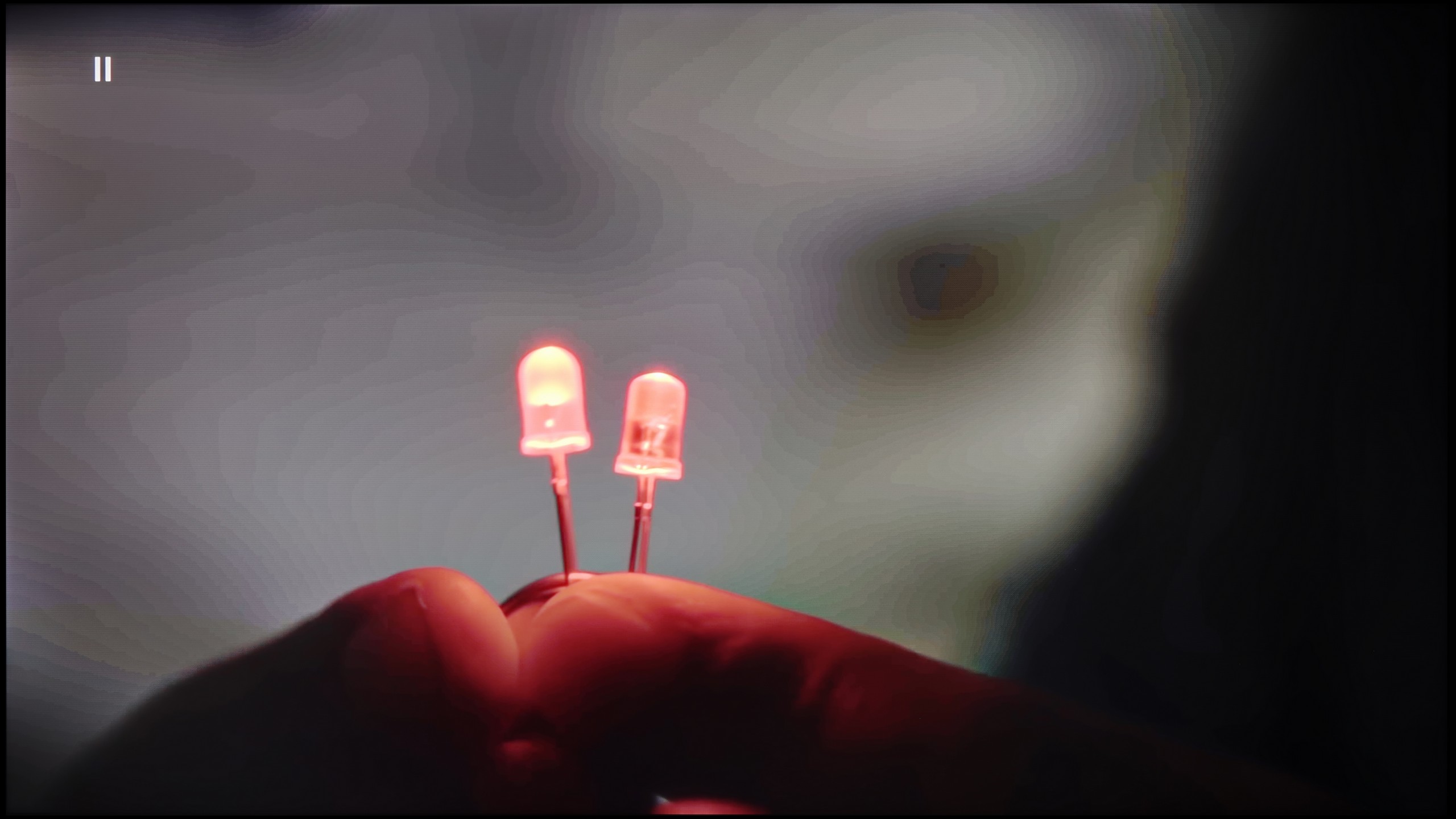
Image without overscan on the SD signal


Smoothing tonal transitions on the DU8002 television leaves a mixed impression. Although the menu features an option for smoothing tonal transitions, in practice it yields no results and may even generate unwanted side effects.
Nevertheless, the television performs excellently with upscaling, or digital image processing. The test pattern with the model looked really good – the image is not excessively jagged, and the overall presentation is decent and pleasant to the eye. This is definitely good news for those planning to watch traditional television on this model.
Upscaling and digital image processing on the Q7F is a bit of a sine wave. On one hand, we have really nice upscaling – weaker sources look better than one might expect. The image becomes clearer, sharper, and even older films or terrestrial television perform adequately. Samsung has been strong in this area for years, and the Q7F confirms that. On the other hand… there are some issues. The television has a problem with overscan – part of the image is simply cut off, and it doesn't look very elegant. Additionally, we were let down by a feature called "noise reduction", which should improve the smoothness of tonal transitions in weaker materials. In other Samsungs, it works relatively well, but here it makes practically no difference – the banding in gradients is still there. It's a bit of a shame, as one could have expected more from a model that is aimed at users looking for a display for SDR content.
Blur and motion smoothness
5/10
4/10

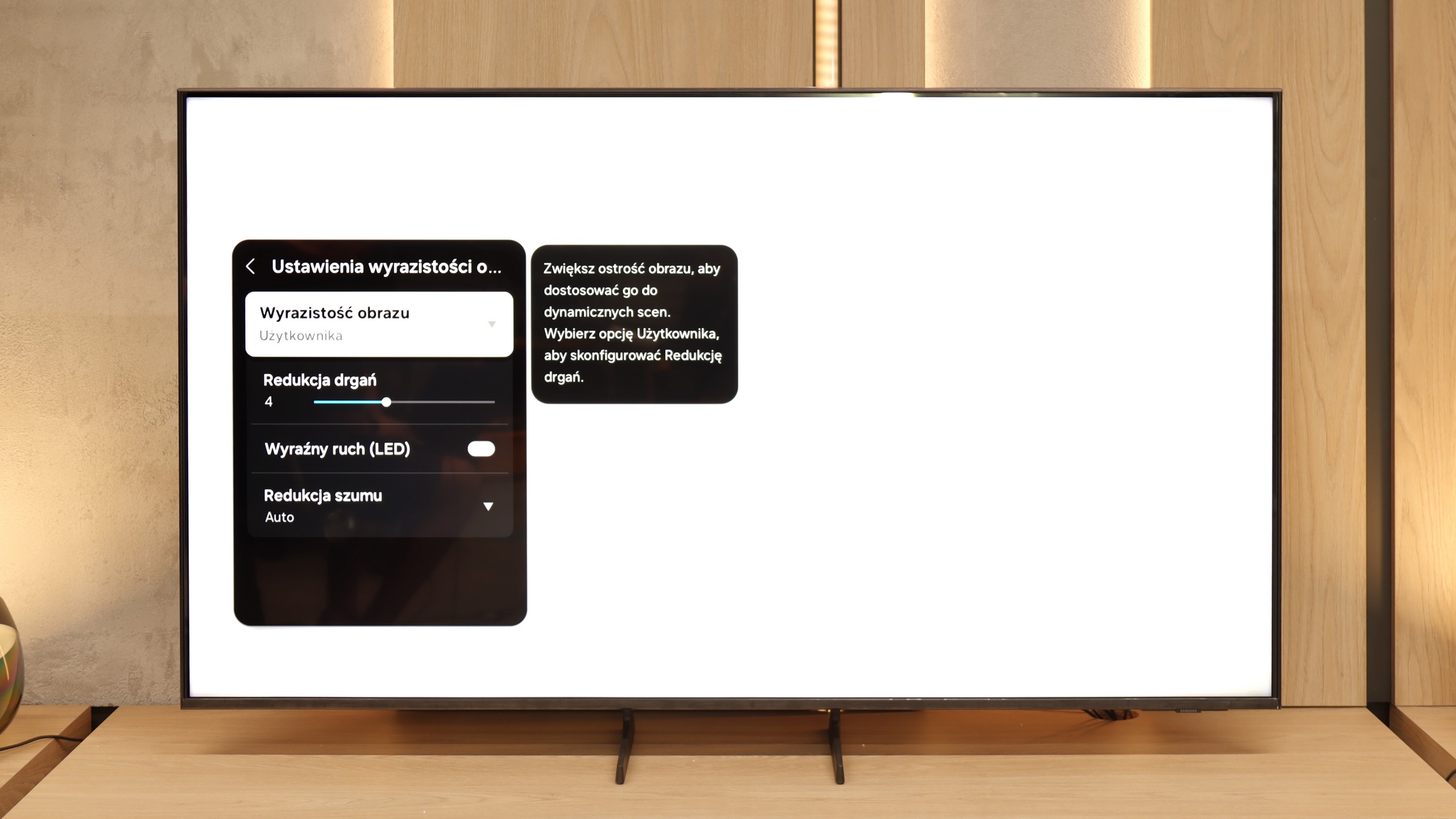
Blur (native resolution, maximum refresh rate):



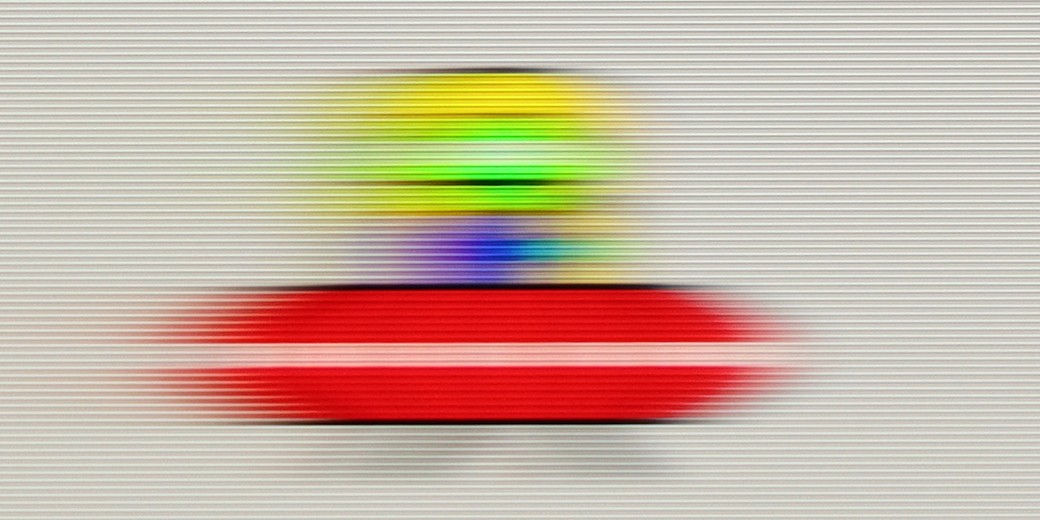
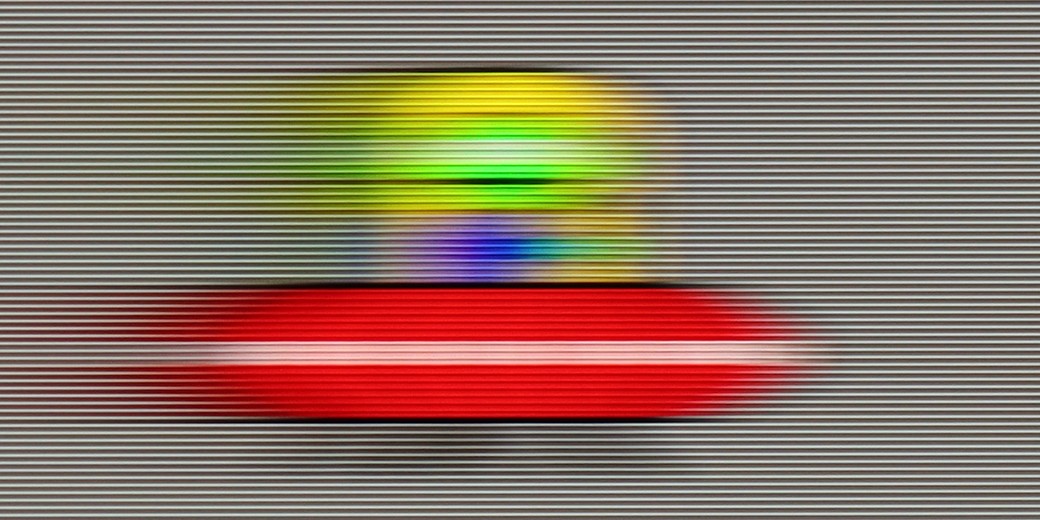
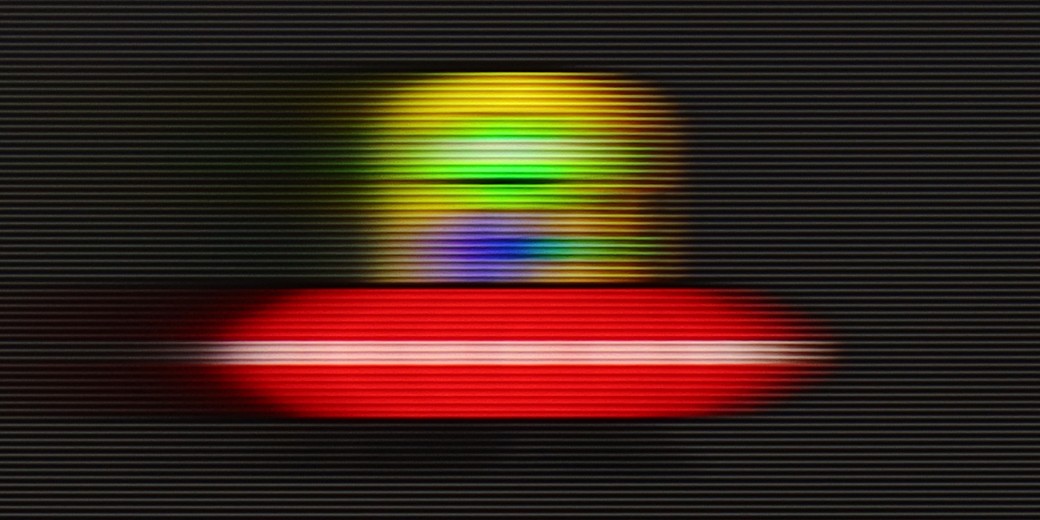
Blur (BFI function enabled):



Image flickers in this mode
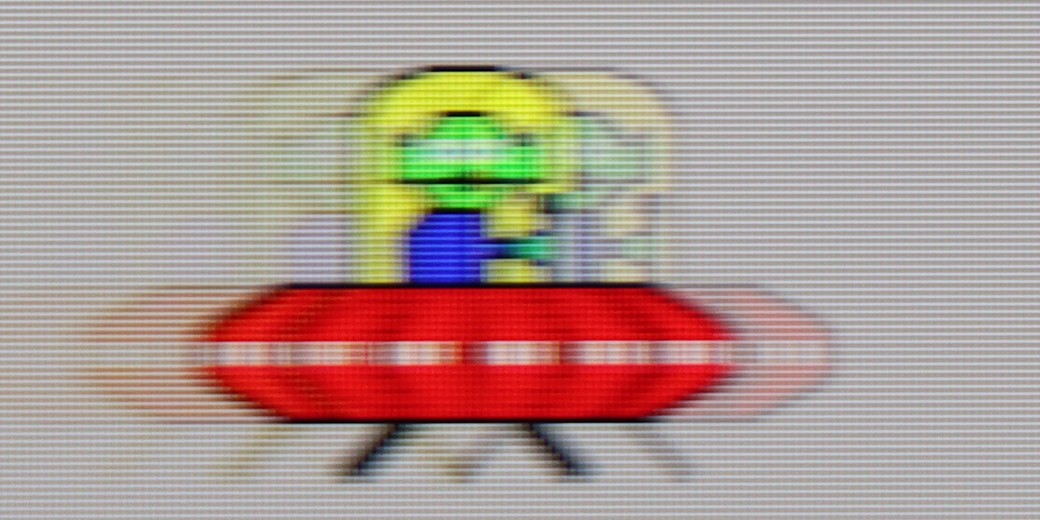


The DU8002 with a 60 Hz panel is a television that performs better for watching films than for intense gaming. The motion smoothing feature acts as a fluidizer, smoothing out movement and giving scenes a more fluid appearance, which is helpful for movie screenings. In the context of gaming, this model is more suited for casual entertainment.
Ghosting and motion smoothness in the Q7F are probably the most budget-friendly elements of this television. The 60 Hz panel makes itself known, with noticeable ghosting, especially in dynamic scenes, and it's rather difficult to regard this model as equipment designed for watching sports or playing fast-paced games. In tests with the little green man, a long trail was left behind, similarly to how a ball in a football match would leave streaks.
On the plus side, the presence of motion smoothing must be acknowledged. In films, it actually makes a difference – especially since most material is recorded at 24 frames per second. Here we can decide whether we prefer a more "cinematic" image, with slight judder typical of cinema, or a smoother, more "television" approach. This part works quite well and helps to improve the viewing experience for series and films.
Console compatibility and gaming features
4.2/10
3.3/10
- ALLM
- VRR
- VRR range
- Dolby Vision Game Mode
- Correct implementation of HGIG
- 1080p@120Hz
- 1440p@120Hz
- 4K@120Hz
- Game bar

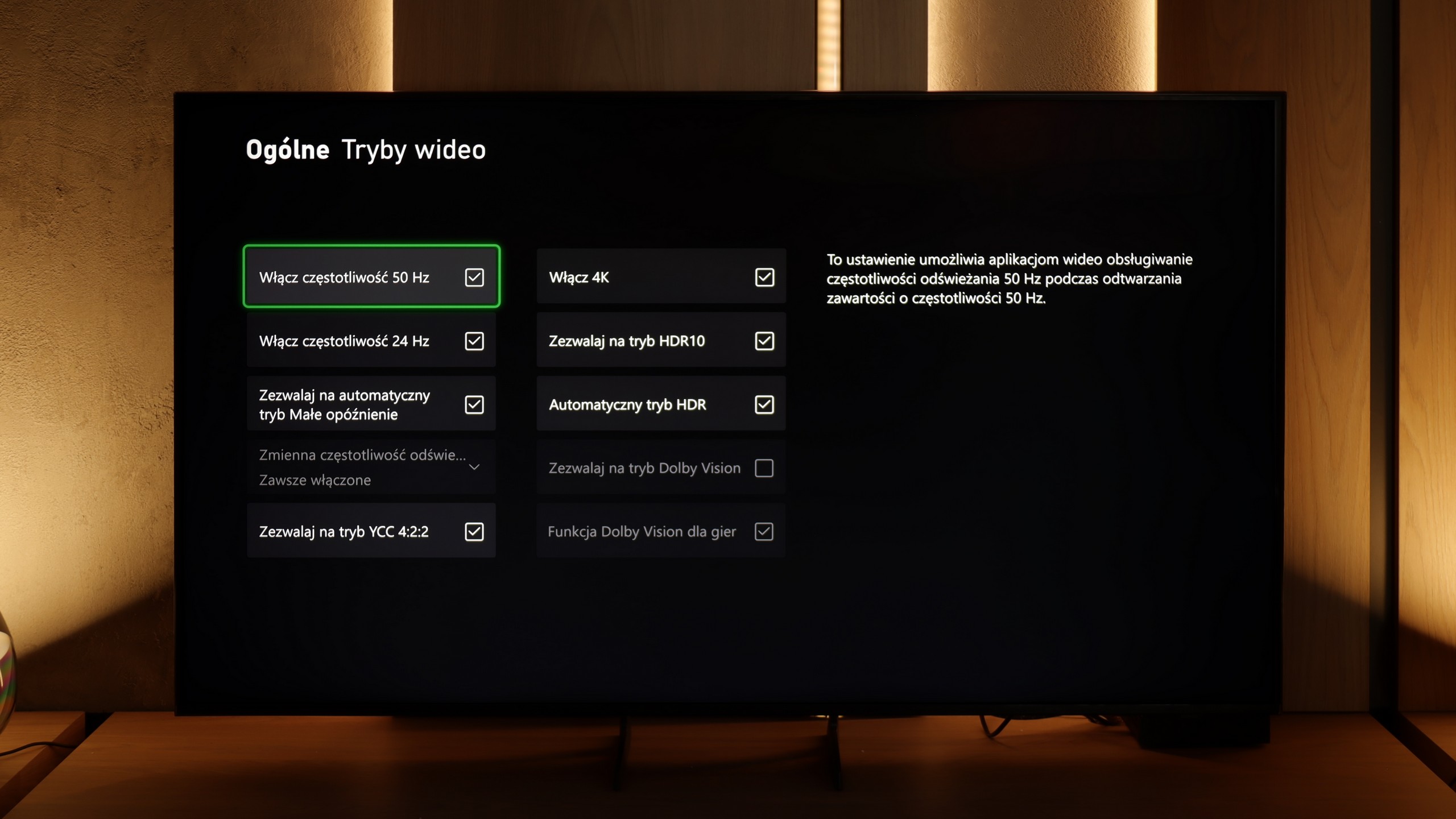

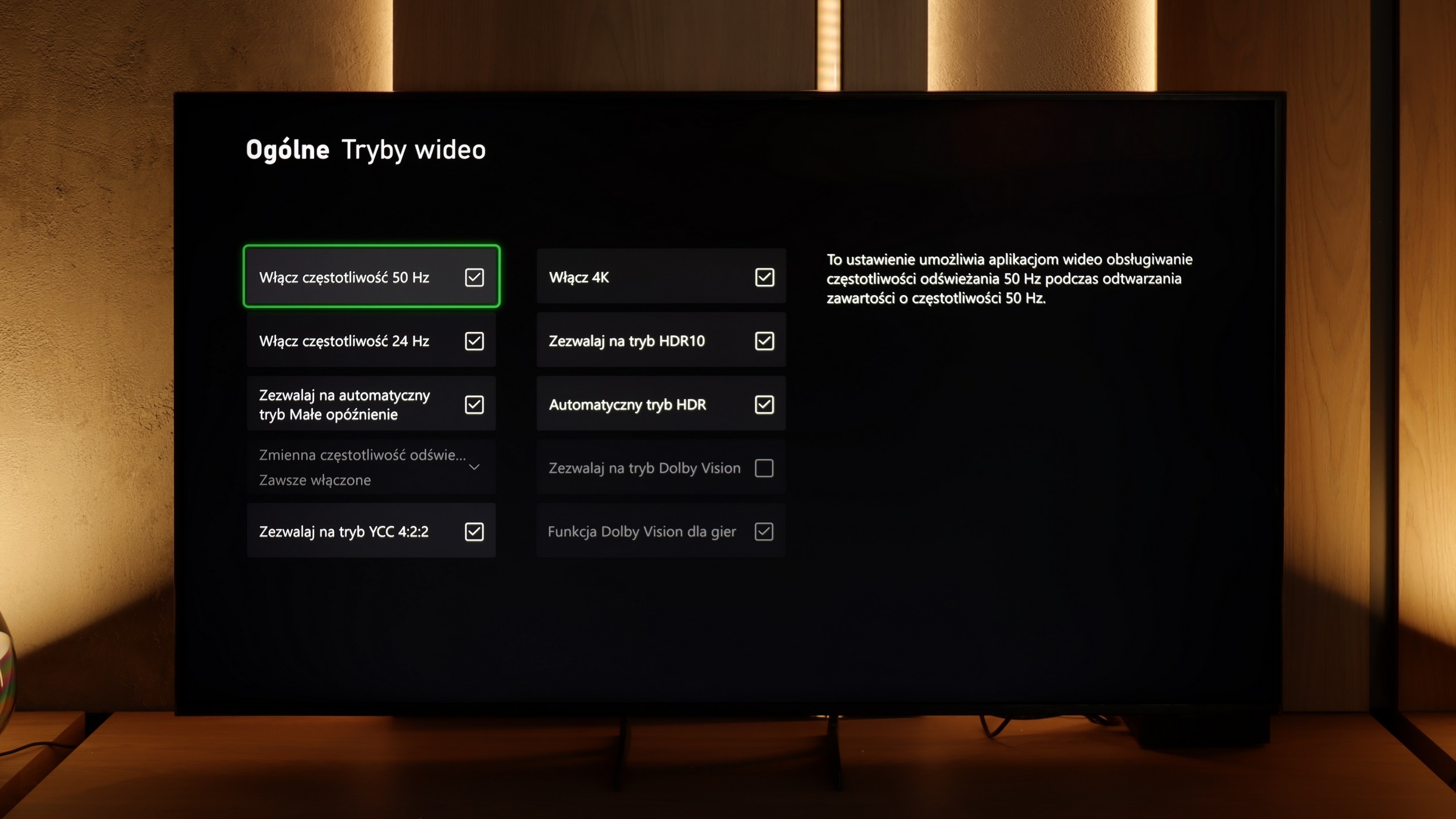

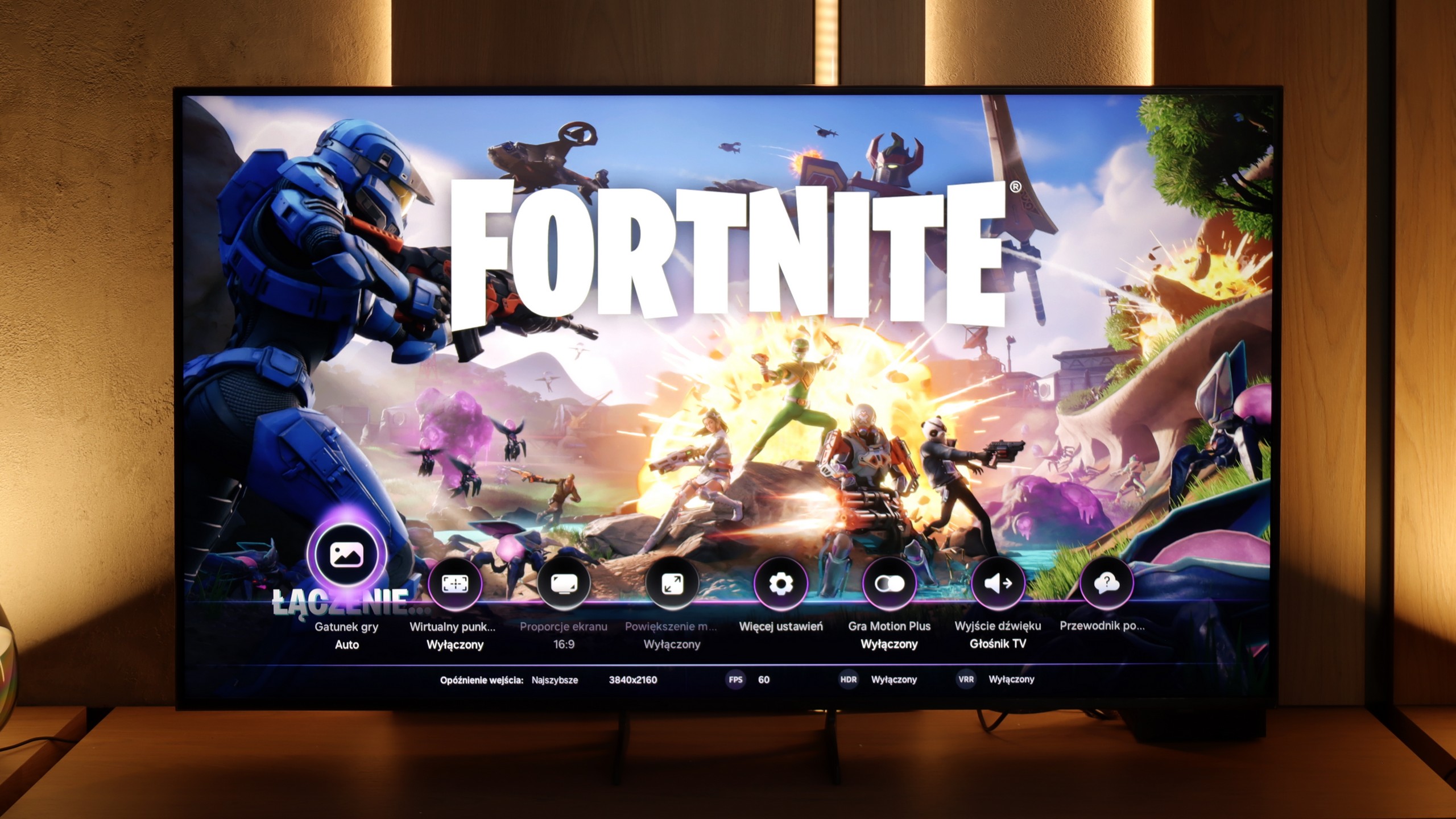

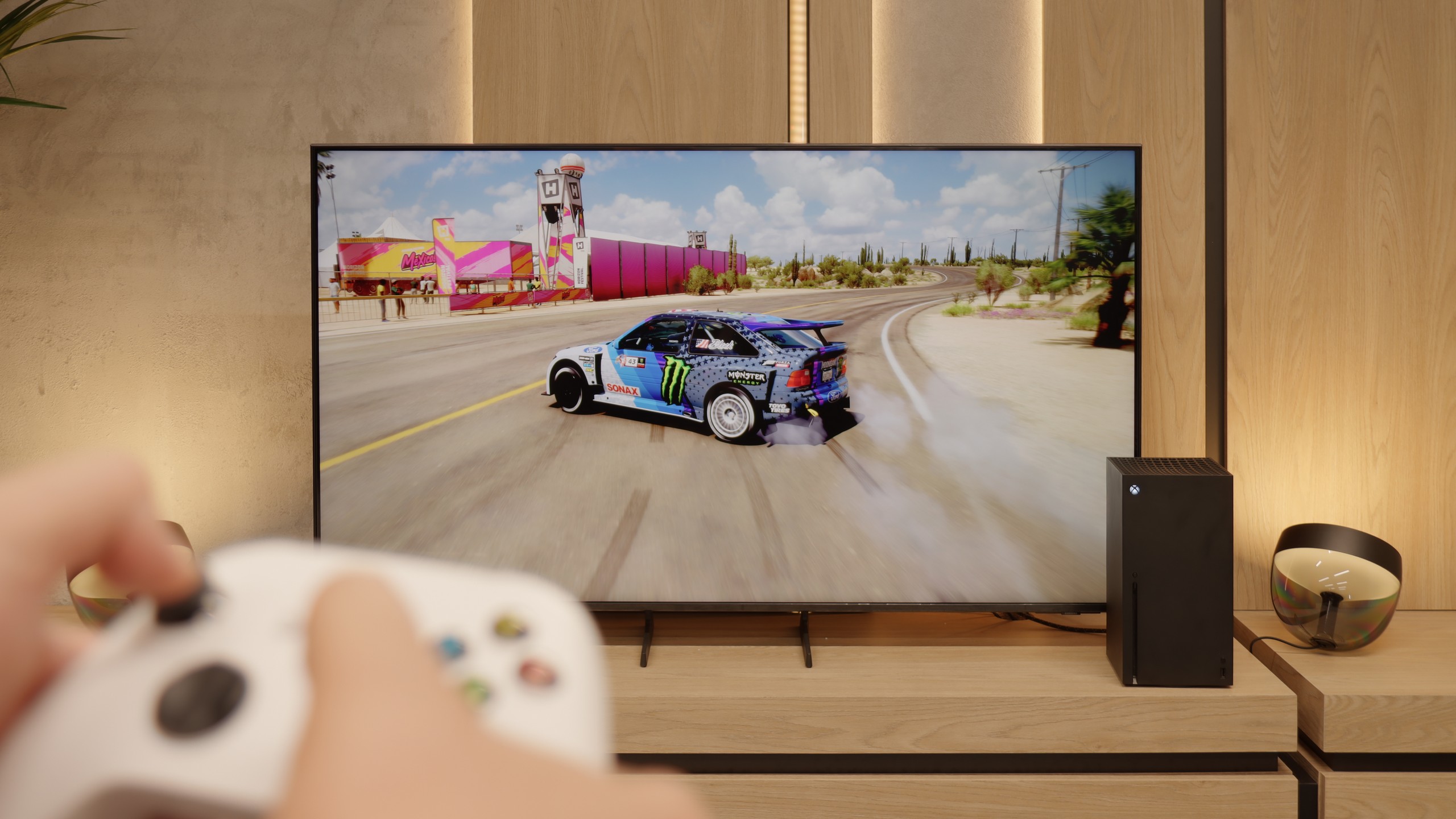
DU8002 is a television that is primarily suitable for casual gamers. The 60 Hz panel does not provide the highest motion smoothness, so in dynamic games, there may be a lack of that extra fluidity in the picture. On the plus side, it features ALLM and HGiG functions, which automatically adjust the picture settings for HDR gaming, enhancing the gaming experience. Unfortunately, the television is equipped only with HDMI 2.0 ports, so we will have to forget about more advanced features like VRR or support for 4K at 120 Hz. With this equipment, we will have to settle for less if we expect a full set of gaming features.
Features for gamers in the Samsung Q7F is a topic that evokes quite a lot of mixed feelings. On the one hand – no sensible person expected miracles here, as it is after all a 60 Hz television and it was clear from the start that it would not be a device for squeezing the maximum out of a console or PC. On the other hand, since the manufacturer promised specific solutions in promotional materials, it is natural that we wanted to see them in practice. At the outset, it’s quite decent. The automatic game mode (ALLM) works, so there’s no need to manually fiddle with the settings; the console automatically switches the television to low-latency mode. Additionally, we have the Game Bar, which looks impressive and allows you to check a few basic parameters without leaving the game. And this is where the good news ends.
The biggest problem with the Q7F is VRR, or rather its absence. Yes, an appropriate icon appears in the menu, and you can even see it in the Game Bar, but throughout the entire test, the feature remained inactive and could not be enabled in any way. The situation with HGiG is even more painful; this option was indeed available at the beginning, but after a software update, it completely vanished, which is simply unprofessional. Therefore, the Q7F is only suited for the absolute basics. Of course, you can turn on the console, play some calmer titles, and enjoy low input lag, but if someone is counting on more advanced features that the manufacturer promised, they will be disappointed. This is not a television to buy with gaming in mind, and it's better to be aware of that before making a purchase.
Input lag
10/10
10/10
SDR
HDR
Dolby Vision
The input lag on the DU8002 is definitely its strong point. The delay is low enough that every reaction on the screen is instantaneous, making gaming smooth and enjoyable. For gamers who enjoy dynamic titles and value quick response times, this television is impressively positive. Although it lacks advanced gaming features or a higher refresh rate, the low input lag is a real advantage that makes a difference.
Input lag on the Samsung Q7F is really good for a television with a 60 Hz panel. Measurements showed values below 12 ms, which means that for regular gaming on a console, this model is more than sufficient. Of course, it is not on the level of high-end 120 Hz screens, which can go as low as 6–7 ms, but in everyday practice, it is hard to talk about noticeable delay. In this respect, the Q7F does not fall behind its competitors in its segment and can easily be considered a safe choice for casual or sports gaming. At least in this regard.
Compatibility with PC
6/10
6/10

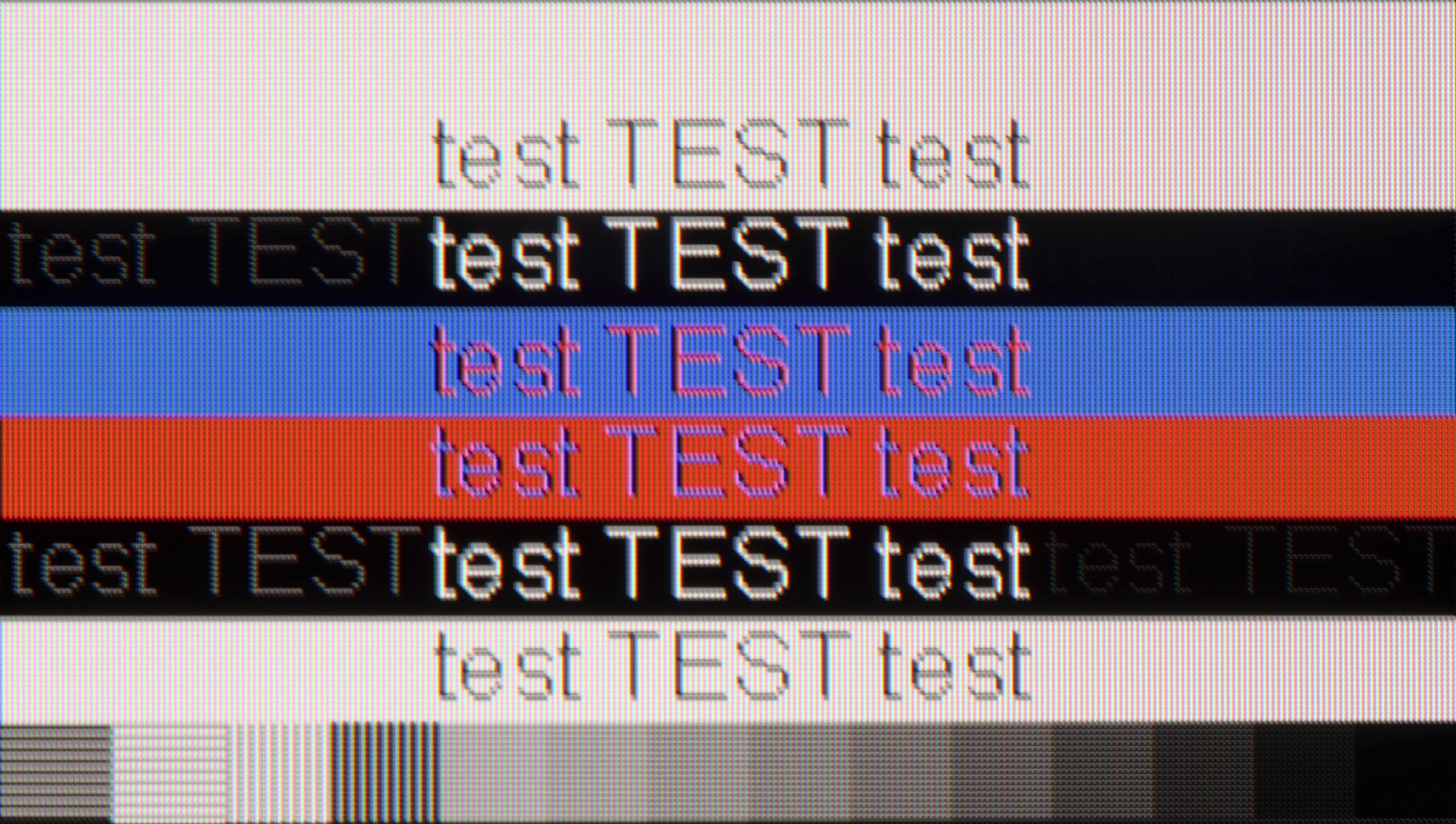
The DU8002 performs excellently as a computer monitor. The support for chroma 4:4:4 ensures great readability of fonts, making text appear sharp and clear, which is a significant advantage during extended work sessions and content browsing. It really does well for office tasks and everyday use. When it comes to gaming, the situation is more complex – the 60 Hz panel somewhat limits fluidity, which may not appeal to more demanding gamers. However, the low input lag is definitely a plus, making games responsive and enjoyable. In short: great for work, less so for gaming.
Collaboration with a PC on the Q7F is decent, although it is not a television that will satisfy the most demanding users. Fonts are displayed clearly and sharply, so it is perfectly fine to work on it – especially for daily office tasks or browsing the internet. With thin letters, one can notice slight shadowing, but it is not something that interferes with normal use. In a smaller size, the Q7F can indeed work as a computer screen, although one must remember its limitations. The lack of variable refresh rate means we cannot use G-Sync or FreeSync, and 60 Hz practically closes the door to more demanding PC gaming. For work and light usage, it will be okay, but for serious gaming, it is definitely better to look for something higher in Samsung's offering.
Viewing angles
6.9/10
3.5/10
DU8002 has really great viewing angles, thanks to its IPS panel. Even when looking at the screen from the side, the picture remains sharp and the colours vibrant. This is a big plus, especially if we often watch films with a larger group or work at a wide desk. There’s no need to worry that someone sitting to the side will see a washed-out image – everything looks good here, regardless of the angle.
The viewing angles on the Q7F are simply poor – typical for a VA panel. Just sitting slightly to the side immediately shows that the image loses quality. Colours fade, contrast clearly drops, and blacks start to resemble grey more than anything deep. This is a television that is definitely best viewed head-on, and any wider viewing angle comes with compromises.
TV efficiency during daytime
4.2/10
3.9/10

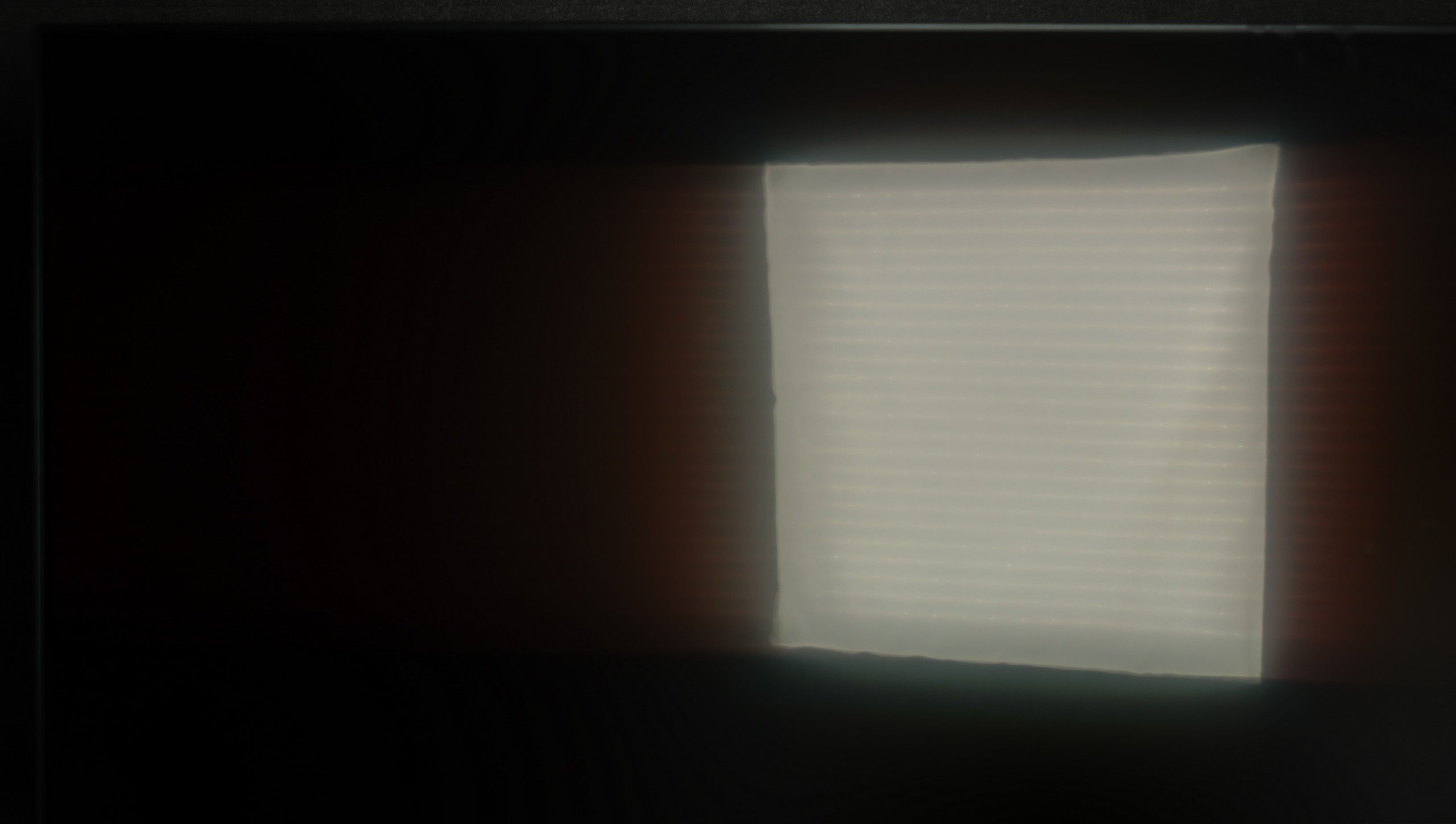

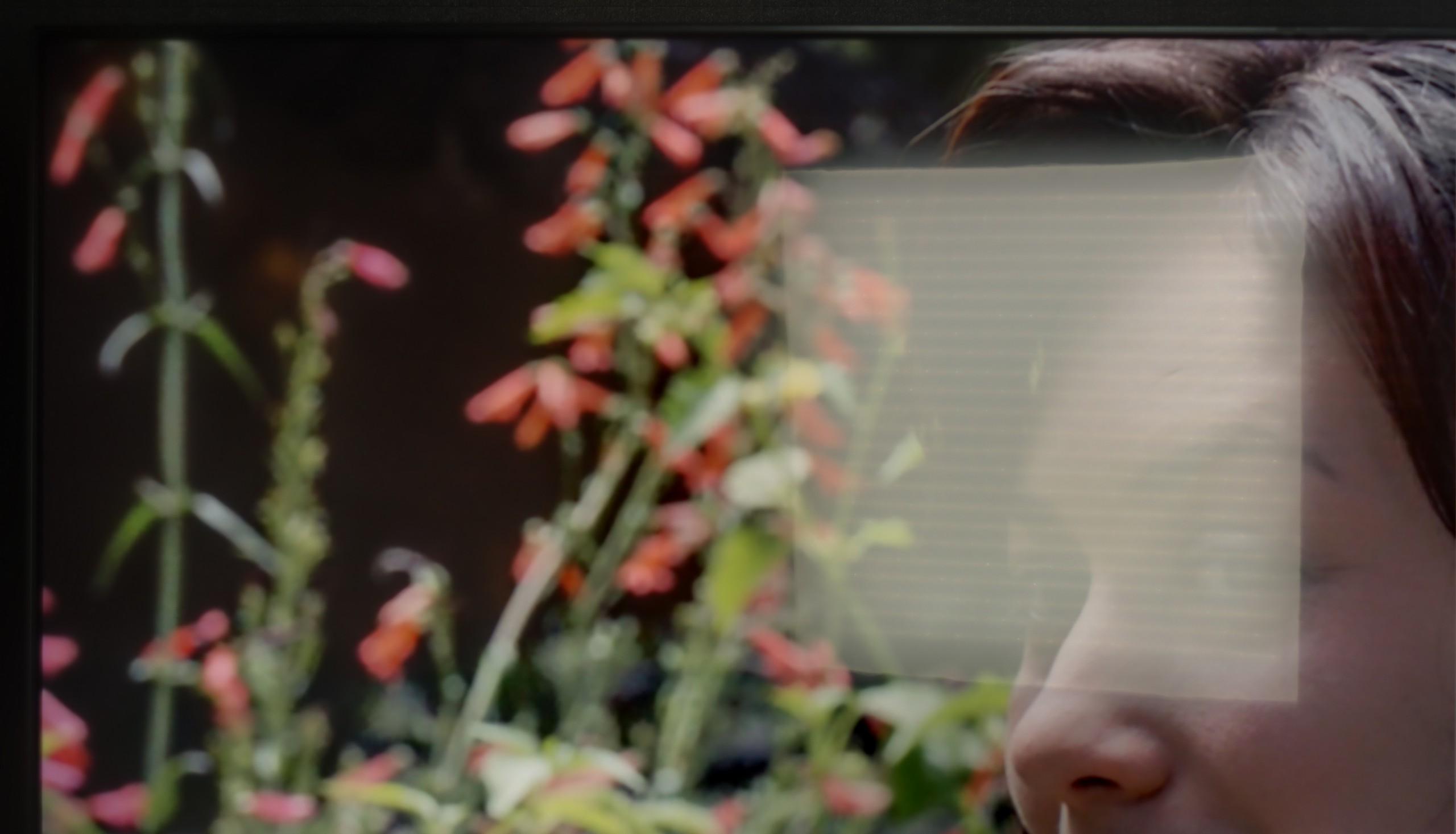
Matrix brightness
Average luminance SDR
Samsung Q7F: 237 cd/m2
Samsung DU8002 (IPS): 291 cd/m2
The performance of the DU8002 television during the day is decent, although it doesn't stand out particularly. The satin finish panel manages medium well with glare reduction, so in strong sunlight, reflections may be noticeable. On the other hand, the stable brightness at 300 nits works quite well in a slightly lit room, providing a clear image. This is a solid result that will satisfy during daily use, although in heavily sunlit interiors, it may lack extra power.
The performance of the Q7F during the day unfortunately does not impress. Due to its low brightness, the screen quickly capitulates in very sunny rooms. It is therefore hard to recommend it to those who plan to watch television in a bright living room with large windows. In moderately lit rooms, it still performs adequately, but in bright light, the picture loses clarity. Additionally, the fact that the panel does not always effectively handle glare means reflections can be distracting during the day. This is more of a screen for evening viewing rather than for daily sessions in full sunlight.
Details about the matrix
Subpixel Structure:

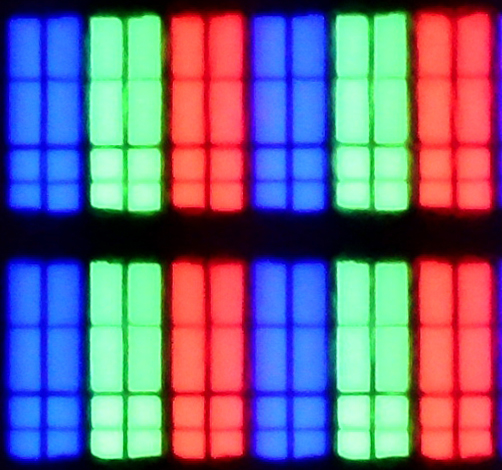
Panel uniformity and thermal imaging:
Samsung DU8002 (IPS)
Samsung Q7F
TV features
6.3/10
7.3/10
- HDMI inputs3 x HDMI 2.0, 0 x HDMI 2.13 x HDMI 2.0, 0 x HDMI 2.1
- OutputsToslink (Optical audio), eARC (HDMI), ARC (HDMI)Toslink (Optical audio), eARC (HDMI), ARC (HDMI)
- Network InterfacesWi-Fi 2.4GHz, Wi-Fi 5GHz, Ethernet (LAN) 100MbpsWi-Fi 2.4GHz, Wi-Fi 5GHz, Ethernet (LAN) 100Mbps
- TV receptionDVB-T, DVB-T2, DVB-CDVB-T, DVB-T2, DVB-S, DVB-S2, DVB-C
Classic features:
- Recording to USB (terrestrial TV)
- Recording programming
- Picture in Picture (PiP)
- RF remote control (no need to aim at the screen)
- Backlit remote control
- Teletext
- Audio only mode
- Bluetooth headphones support
- Simultaneous Bluetooth headphones & TV audio
Smart features:
- AirPlay
- Screen mirroring (Windows Miracast)
- Voice search
- Voice search in native language
- Ability to connect a keyboard and mouse


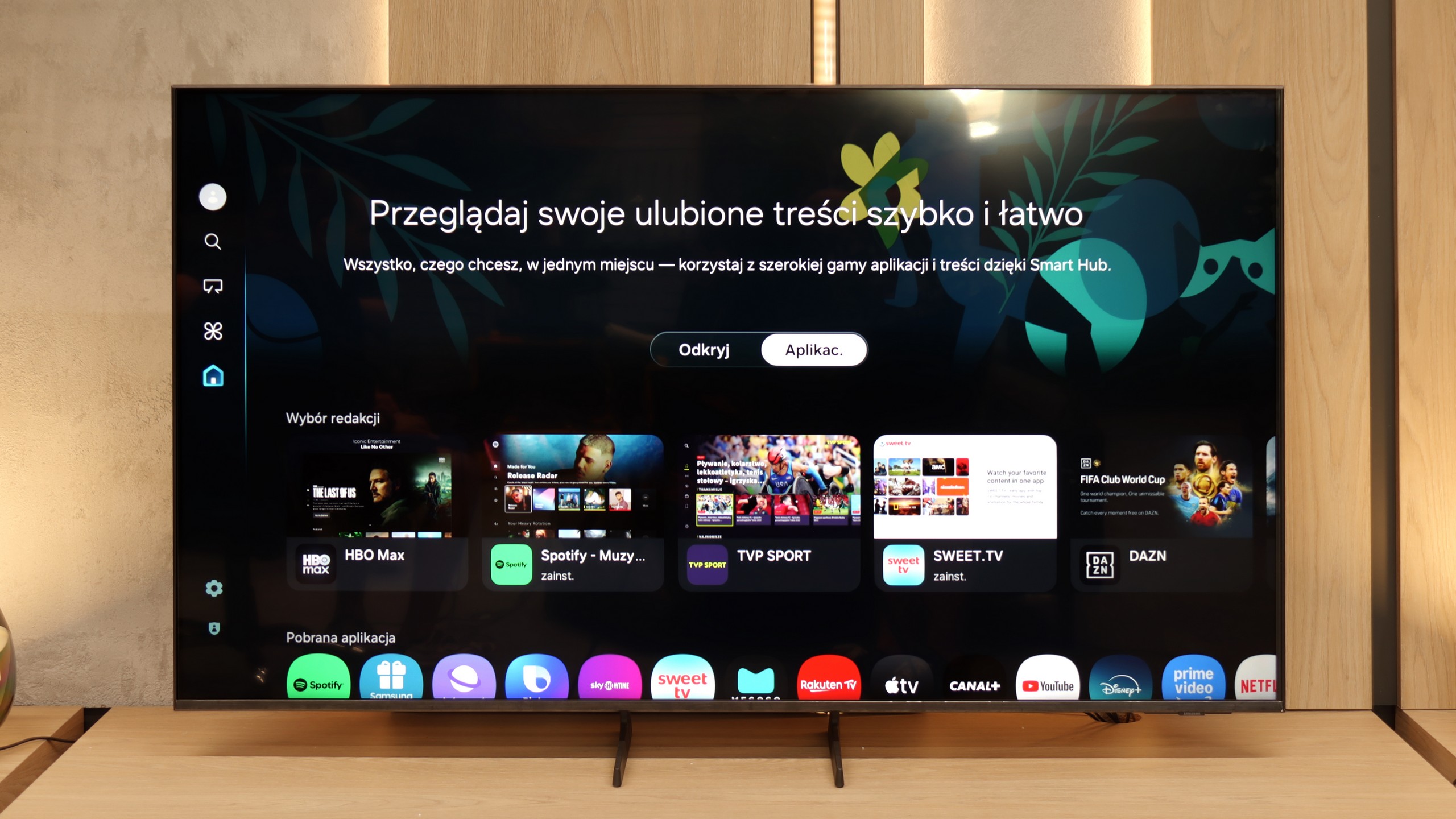
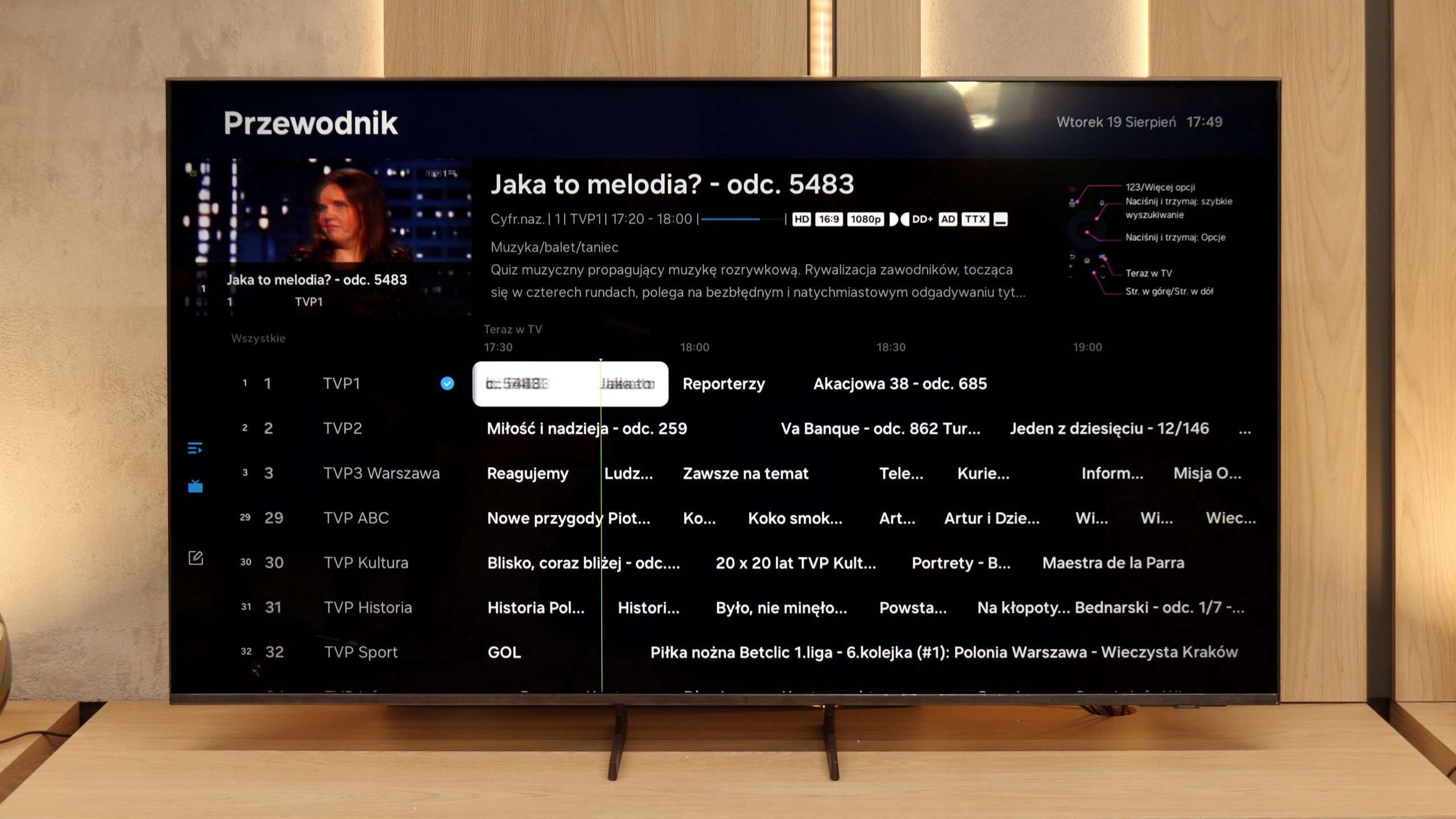
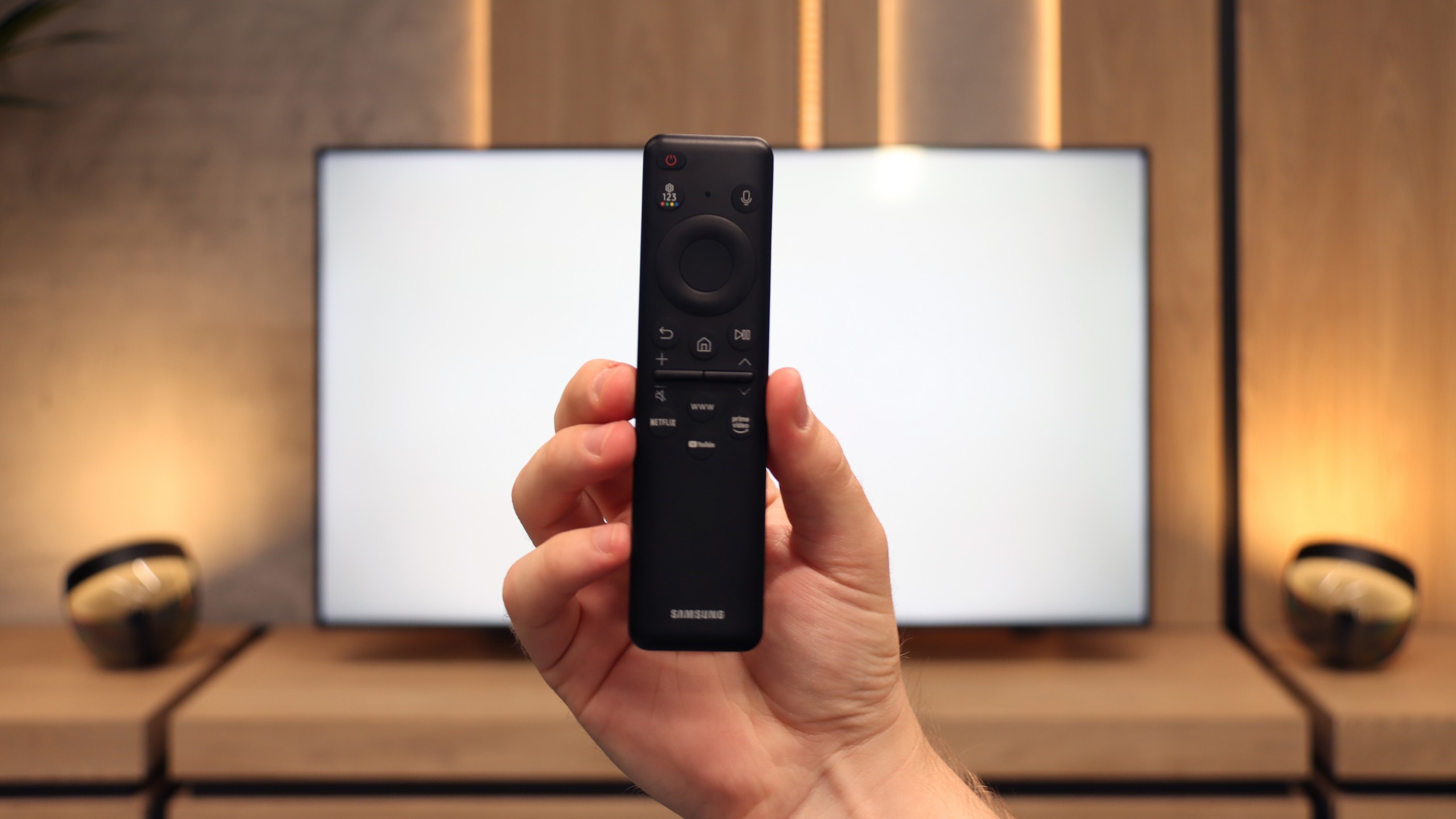
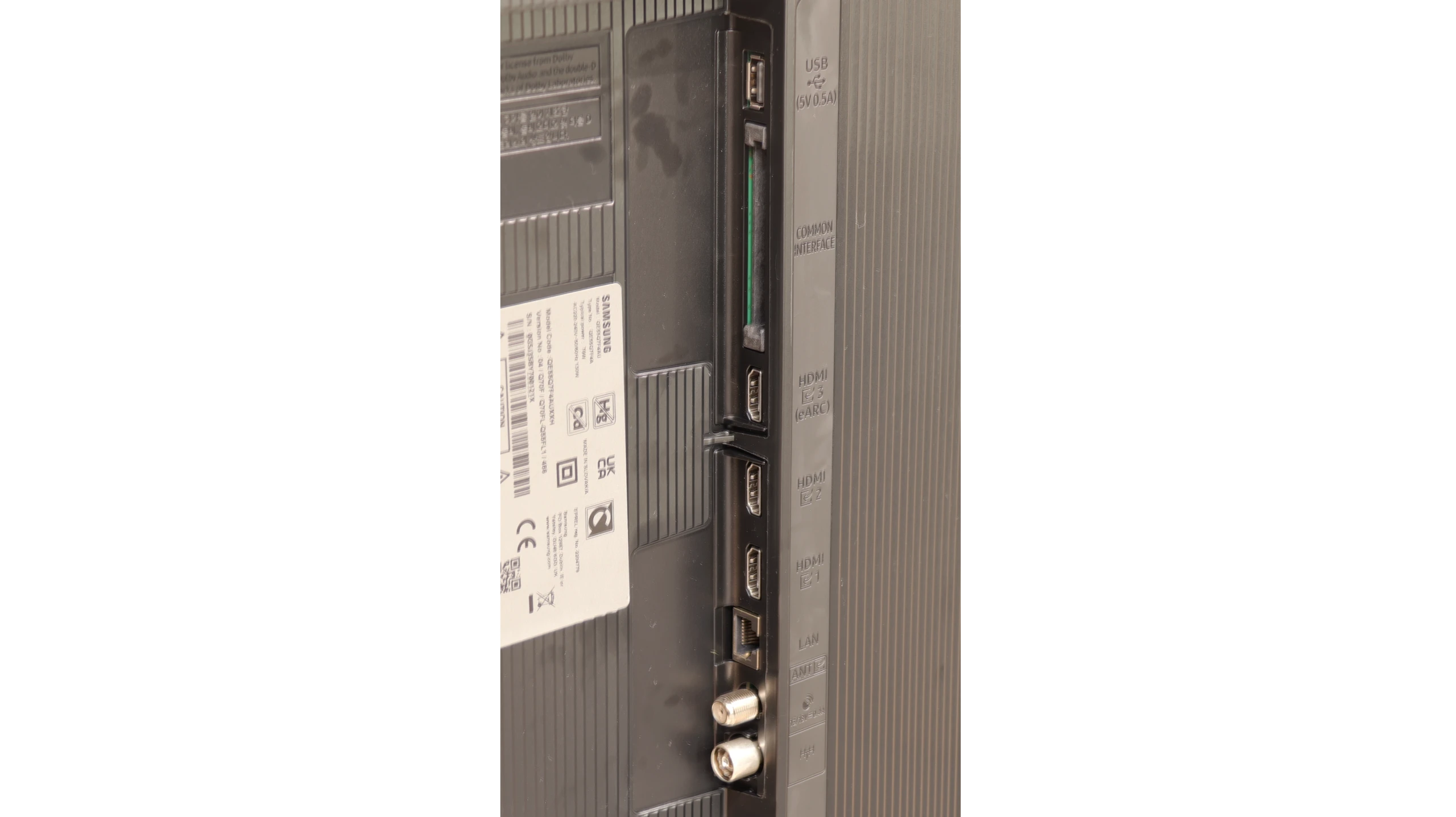
The Tizen system in the DU8002 television is a big plus. It runs smoothly, offering a lot of applications to choose from, although there are some limitations, such as the absence of Canal+. The voice control in Polish is a good feature, simplifying daily navigation. Tizen also provides a solid foundation for building a smart home thanks to integration with SmartThings – a great option for those who want to manage devices in their home from one place.
Among the user-friendly features, we find AirPlay and Miracast, which make it easy to stream content from phones or laptops to the TV screen. The ability to connect devices via Bluetooth is another advantage. As for the drawbacks – the lack of the PiP (picture in picture) function and the option to record programmes may be disappointing. Fortunately, the Samsung remote, although small and neat, has its advantages. It can control external devices, such as decoders, which often offer recording functionality, which can mitigate this shortcoming.
As for the design, the DU8002 is a true gem. It is one of the sleekest devices available on the market. With the right mount, it can be installed on the wall, resembling a picture frame – the effect is impressive and fits perfectly into modern interiors. Additionally, the adjustable width of the stand allows it to be adapted to various furniture, although unfortunately this option is not available in all sizes.
Smart TV – Tizen System
Here Q7F shows its strongest side. Samsung has been developing the Tizen system for years, and it is evident that we are dealing with a mature, well-refined platform. Everything runs smoothly, the menu does not lag even when switching between heavier applications, and installing additional programmes from the library is quick and hassle-free. In addition, there is full support for AirPlay, integration with voice assistants, as well as a wide range of add-ons – from cooperation with devices in the SmartThings ecosystem to the ability to control Philips Hue smart lighting or other smart gadgets. Samsung strongly focuses on advanced networking features, and this is evident – in terms of Smart TV, the Q7F has absolutely nothing to be ashamed of, and on the contrary, it can embarrass more expensive competitors.
Classic Features
On the side of classic, “television” solutions, it is clear that the manufacturer has bet everything on the smart card. We will not find any USB recording or PiP mode here, which used to be standard features. It is evident that the Q7F is meant to be primarily a multimedia centre, rather than a device for those accustomed to more traditional solutions. Fortunately, several practical additions are not lacking – we have Bluetooth for pairing headphones or speakers, and the option to change the font size in the menu, which will be appreciated by users with weaker eyesight.
Playing files from USB
9.1/10
9/10
Supported photo formats:
Maximum photo resolution:

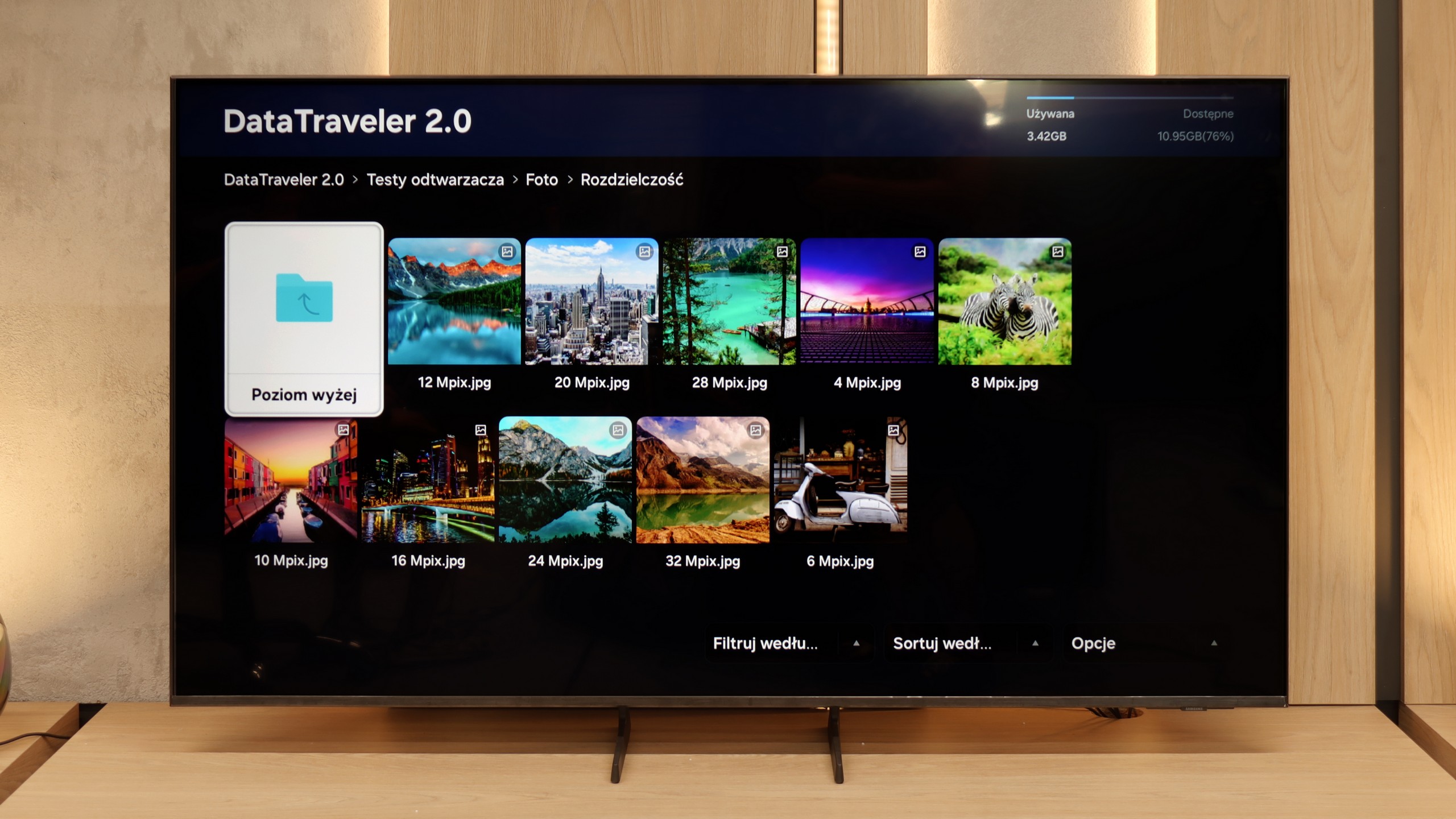
Playback of files from USB on the DU8002 television is at a very good level, similar to most Samsung models. The television handles most popular audio, video, and photo formats, making multimedia playback convenient and hassle-free. Support for Polish characters in subtitles and the ability to change the font colour are a significant plus that users who enjoy customising their experience will appreciate. Among the minor drawbacks, one could mention the lack of support for the HEIC photo format, popular among Apple users. Nevertheless, playback of files from USB is at a very satisfactory level and should meet the expectations of most users.
In the Q7F we have a built-in file player, and as is usually the case with Samsung televisions, it works quite well – most popular films or music will play without fuss. For basic use, it is sufficient, and there is no real need to reach for external solutions like connecting a laptop. It is worse if someone wants to upload photos – here it can lag, especially with Apple's HEIC or PNG, which are visible in the player menu but do not necessarily want to work.
Apps
8.7/10
8.7/10














































Sound
5.9/10
5.8/10
- Maximum volume-80dB
- Dolby Digital Plus 7.1
- Dolby True HD 7.1
- Dolby Atmos in Dolby Digital Plus (JOC)
- Dolby Atmos in Dolby True HD
- DTS:X in DTS-HD MA
- DTS-HD Master Audio
The sound on the DU8002 is clear and distinct, but unfortunately, it lacks bass – this is the result of the slim casing, which sacrifices depth of sound for a sleek appearance. When it comes to audio file playback, there is no support for DTS, which may be a downside for more demanding users. Fortunately, the television supports the Dolby Digital Plus codec, which allows for transmitting Dolby Atmos sound to other devices, such as soundbars. This enables us to enjoy immersive sound that adds a new dimension to films and music.
The Samsung Q7F comes with a 20 W speaker system and… well, let’s not kid ourselves, it’s nothing revolutionary. The television itself sounds quite decent, meaning we can clearly hear series, news, or daily programmes; dialogues do not get lost, but there’s a significant lack of depth and sound space. There is virtually no bass; it thuds somewhat, but it resembles more of a box being tapped rather than true low tones. Music comes across flat, and films don't make any significant impression – we won’t feel like we're in a cinema. It’s sound from the ‘acceptable’ category, just enough to have something built-in, but if someone is counting on a stronger experience, they will inevitably reach for a soundbar sooner or later. And to be honest – even the simplest model will make a considerable difference, and Samsung has quite a few in their offering.
Acoustic Measurements
No acoustic data
80dBC (Max)
75dBC
